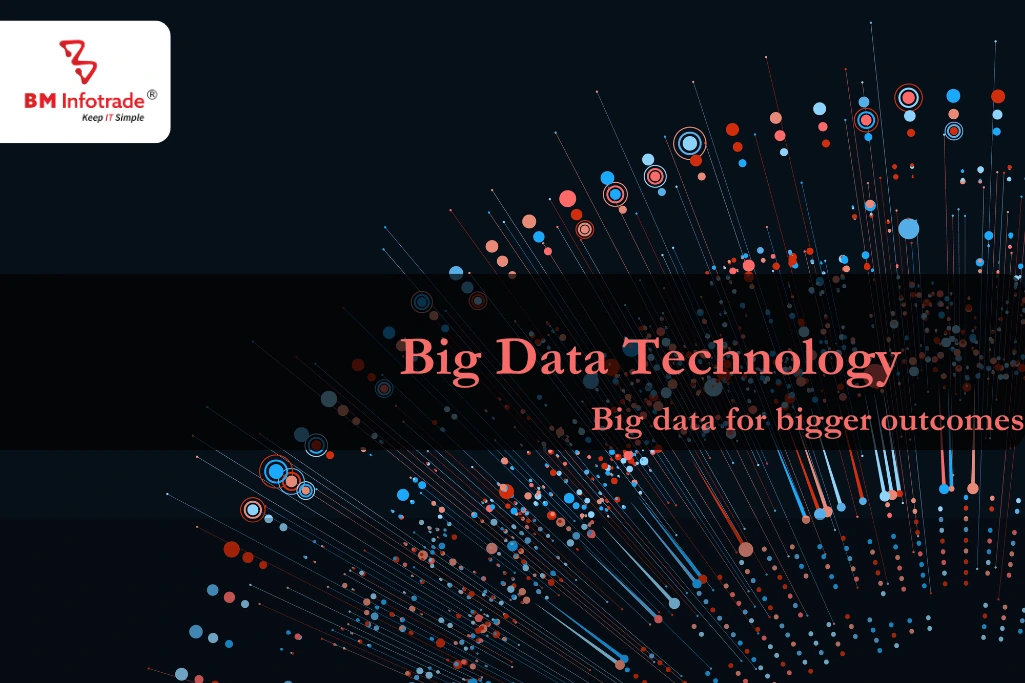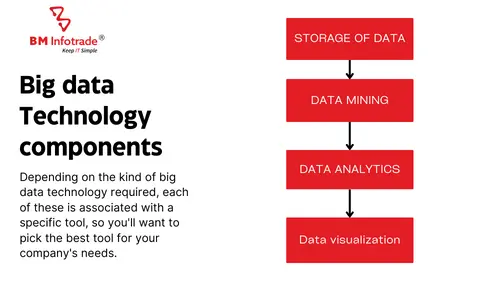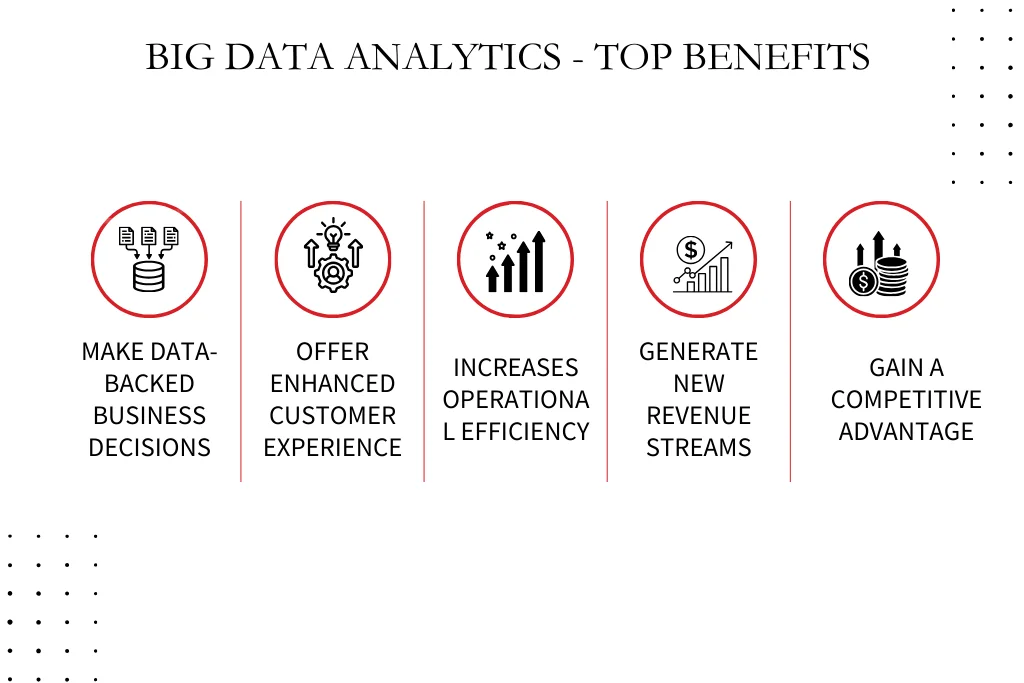Big Data Technology- Big data for bigger outcomes
Explore the power of big data technology and how it leads to significant outcomes in various sectors. Understand its applications and benefits.

Big Data Technology- Big data for bigger outcomes
Table of Contents
General programming languages and simple structured query languages were used to manage the data before the advent of big data technologies. However, due to the constant expansion of each organization's information, data, and domain, these languages were insufficient to handle the data. Because of this, handling such massive amounts of data and introducing a reliable and effective technology that caters to all client and large organization requirements and needs, responsible for data production and control, became extremely important. Big data technologies has become a buzzword for all of these requirements in recent years. General programming languages and simple structured query languages were used to manage the data before the advent of big data technologies.
However, due to the constant expansion of each organization's information and data as well as the domain, these languages were unable to handle the data effectively. Because of this, it has become crucial to manage such massive amounts of data and implement a reliable technology that meets all the requirements and needs of clients and big businesses and is in charge of data production and control. Big data technologies are currently the rage for all these requirements.
What is big data technology?
Software-utility is how big data technology is categorized. This technology is primarily intended for the analysis, processing, and information extraction from massive sets of extremely complex structures. Traditional data processing software finds it very challenging to handle this.
Among the more prevalent ideas in technology, big data technologies are frequently linked to a wide range of other technologies, including deep learning, machine learning, artificial intelligence (AI), and the Internet of Things (IoT). In conjunction with these technologies, big data technologies are targeted at processing and handling significant amounts of batch-related and real-time data.
Read More: The Future of Data Analytics: Career Opportunities in 2024
Big data Technology components

Data storage, data mining, data analytics, and data visualization are the four major categories under which big data technologies can be divided. Depending on the kind of big data technology required, each of these is associated with a specific tool, so you'll want to pick the best tool for your company's needs.
Storage of data
The ability to retrieve, store, and manage big data is a feature of big data technology that deals with data storage. It consists of the infrastructure needed for users to store data in a way that makes it easy to access. The majority of data storage platforms work with other software. Apache Hadoop and MongoDB are two frequently used programs.
Apache Hadoop
The most popular big data tool is Apache. It is an open-source software platform that manages big data processing and storage across hardware clusters in a distributed computing environment. The distribution makes it possible to process data more quickly. The framework is made to be scalable, handle all data formats, and have fewer bugs or faults.
MongoDB
MongoDB is a NoSQL database that has the capacity to store massive amounts of data. MongoDB organizes documents into collections using key-value pairs, which are a fundamental data unit. Because it can easily manage and store unstructured data, this big data database, which is written in C, C++, and JavaScript, is one of the most well-known ones.
Data mining
From the raw data, data mining extracts the relevant patterns and trends. Big data tools like Rapidminer and Presto can turn both structured and unstructured data into useful information.
Rapidminer
This data mining software allows you to create predictive models. It uses the processing and preparation of data and the development of machine and deep learning models as its two main strengths. Both functions can drive impact across the organization thanks to the end-to-end model organization.
Presto
Facebook originally created the open-source query engine Presto to perform analytical queries on their sizable datasets. It is now widely accessible. In a matter of minutes, Presto can combine data from various sources within an organization and run analytics on it.
Data Analytics
Big data analytics is the process of cleaning and transforming data into knowledge that can be used to inform business decisions. Following data mining, users execute algorithms, models, and more using software like Apache Spark and Splunk.
Apache Spark
Spark is a well-liked big data tool for data analysis because it runs programs quickly and effectively. Because it uses random access memory (RAM) rather than being stored and processed in batches using MapReduce, it is faster than Hadoop. Many different data analytics tasks and queries are supported by Spark.
Splunk
Another well-liked big data analytics tool for drawing conclusions from sizable datasets is Splunk. In addition to reports and dashboards, it can also produce graphs and charts. Users of Splunk can also apply artificial intelligence (AI) to data results.

Data visualization
Finally, the production of stunning data visualizations using big data technologies is possible. To present recommendations to stakeholders for business profitability and operations, visualization is a skill that is useful in data-oriented roles. It allows one to tell a powerful story with just a single graph.
Power BI
Due to its user-friendly drag-and-drop interface, which makes it simple to create pie charts, bar charts, box plots, Gantt charts, and other types of data visualization, Power BI is a very well-liked tool. Users can share dashboards and visualizations in real time on this secure platform.
Looker
Looker is a business intelligence (BI) tool for interpreting big data analytics and then disseminating those findings to other teams. You can use a query to configure charts, graphs, and dashboards.
Read More: Types of Data Analytics: A Comprehensive Guide
Conclusion
The amount of big data is already enormous, but it is anticipated to increase exponentially as new technologies enter the picture, including the more pervasive IoT devices, drones, and wearables.







Anshul Goyal
Group BDM at B M Infotrade | 11+ years Experience | Business Consultancy | Providing solutions in Cyber Security, Data Analytics, Cloud Computing, Digitization, Data and AI | IT Sales Leader